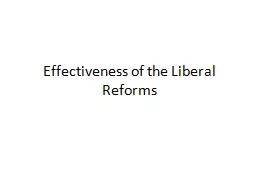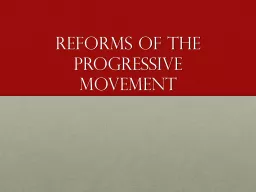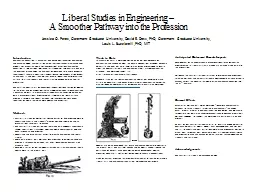PPT-Effectiveness of the Liberal Reforms
Author : pasty-toler | Published Date : 2016-06-15
The Young What was done The Liberals introduced three acts to try and improve the health and wellbeing of the young citizens of Britain The Education Provision
Presentation Embed Code
Download Presentation
Download Presentation The PPT/PDF document "Effectiveness of the Liberal Reforms" is the property of its rightful owner. Permission is granted to download and print the materials on this website for personal, non-commercial use only, and to display it on your personal computer provided you do not modify the materials and that you retain all copyright notices contained in the materials. By downloading content from our website, you accept the terms of this agreement.
Effectiveness of the Liberal Reforms: Transcript
Download Rules Of Document
"Effectiveness of the Liberal Reforms"The content belongs to its owner. You may download and print it for personal use, without modification, and keep all copyright notices. By downloading, you agree to these terms.
Related Documents














